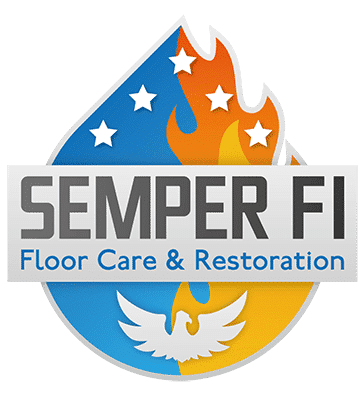Water damage is more than just a structural issue—it’s a breeding ground for mold. Whether caused by a burst pipe, storm surge, or hidden leak, excess moisture creates the perfect environment for mold to thrive. Unfortunately, many homeowners focus only on drying out their property, overlooking the serious risk mold presents.
At Semper Fi Floor Care and Restoration in Yuma, AZ, we emphasize that mold remediation is not an optional extra—it’s a vital part of any comprehensive water damage restoration plan. Here’s why.
What is Mold and Why is it Dangerous?
Mold is a type of fungus that grows in moist, warm conditions. It reproduces by releasing spores into the air, which can be inhaled and cause health issues. Common indoor molds include black mold (Stachybotrys), Aspergillus, and Penicillium.
Health Risks Include:
- Respiratory problems
- Allergic reactions
- Skin irritation
- Headaches and fatigue
- Aggravation of asthma
For people with compromised immune systems, mold exposure can be especially hazardous.
Why Mold Follows Water Damage
Moisture is mold’s best friend. Even after standing water is removed, moisture can remain in drywall, wood, carpets, and insulation. Within 24–48 hours, mold can begin to colonize in damp materials.
Without prompt and thorough drying, and without proper sanitization, mold is almost guaranteed to appear following water damage.
The Dangers of Skipping Mold Remediation
Ignoring or delaying mold remediation can have serious consequences:
1. Health Complications
Even low levels of mold exposure can cause significant health issues for sensitive individuals.
2. Property Damage
Mold eats away at organic materials like drywall, wood, and insulation, compromising your home’s integrity.
3. Increased Costs
What starts as a minor problem can turn into an extensive (and expensive) remediation project.
4. Legal and Insurance Issues
Failure to address mold can affect property value and violate health regulations, especially in rental or commercial properties.
How Semper Fi Floor Care and Restoration Handles Mold After Water Damage
Our comprehensive approach ensures your home is dry, clean, and mold-free. Here’s how we incorporate mold remediation:
1. Thorough Inspection
We use infrared cameras and moisture meters to detect hidden dampness.
2. Immediate Containment
We isolate affected areas to prevent mold spore spread.
3. Safe Mold Removal
Our team removes contaminated drywall, flooring, and insulation following EPA guidelines.
4. Sanitization and Air Scrubbing
We disinfect affected areas and use HEPA filtration to purify the air.
5. Ongoing Monitoring
We don’t stop until moisture levels are back to normal and post-remediation testing confirms the area is safe.
When Should You Suspect Mold After Water Damage?
- You smell a persistent musty odor
- You see black, green, or white spots on walls or ceilings
- You experience unexplained allergic symptoms
- The water damage occurred more than 48 hours ago
If you notice any of these signs, call Semper Fi immediately.
Why Choose Semper Fi Floor Care and Restoration?
- Over a decade of experience in Yuma, AZ
- Licensed, insured, and certified (ROC# 349271)
- 24/7 emergency services
- Advanced equipment and EPA-approved cleaning agents
- End-to-end support from inspection to rebuild
We believe in restoring more than property—we restore peace of mind.
FAQs: Mold Remediation and Water Damage
1. Can mold grow immediately after water damage?
Yes, mold can begin growing within 24–48 hours after water damage if the area is not properly dried and treated.
2. Is mold always visible after water damage?
No. Mold can grow inside walls, under flooring, or in ductwork, making it invisible without professional inspection.
3. What’s the difference between mold removal and mold remediation?
Mold removal is simply taking away visible mold. Mold remediation addresses the source, stops the spread, and ensures the area is clean and safe.
4. Will my insurance cover mold remediation after water damage?
It depends on your policy and the source of the water damage. Sudden and accidental leaks are often covered, but gradual damage or flooding may not be.
5. Can I handle mold remediation on my own?
DIY mold removal is risky. Improper handling can spread spores and worsen the problem. Professional remediation ensures safety and thoroughness.
6. What are the health risks of living with mold?
Health risks include allergies, asthma flare-ups, sinus infections, skin rashes, and respiratory issues.
7. How do professionals detect hidden mold?
We use moisture meters, infrared imaging, and air quality testing to detect mold behind walls and in hidden areas.
8. Should I be concerned if the water damage is small?
Even minor water damage can create enough moisture for mold to grow, especially in humid environments like Yuma, AZ.
9. How long does mold remediation take?
The timeline varies based on the extent of contamination, but most jobs are completed within 3–7 days.
10. How can I prevent mold after water damage in the future?
Act fast—dry affected areas within 24 hours, use dehumidifiers, repair leaks promptly, and consider using mold-resistant drywall in moisture-prone areas.


